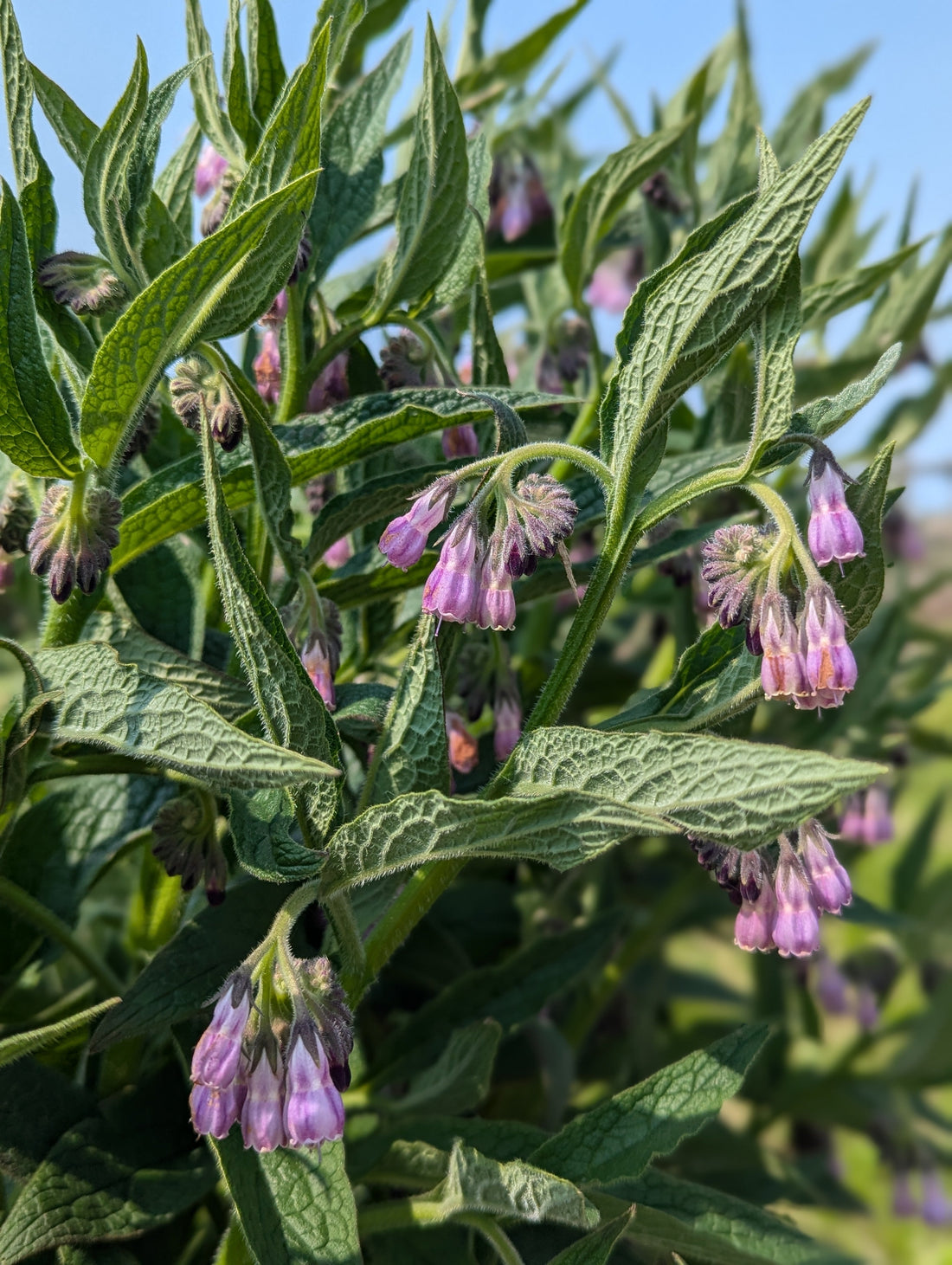Comfrey, it’s one of those all-star permaculture plants that everyone uses and sings its praises. It’s easy to understand why. It produces an incredible amount of green matter each season that can be used for chop and drop mulching or to make a nutrient rich liquid fertilizer, the beautiful blossoms are adored by pollinators and its leaves and roots have healing properties.
However, not all comfreys are created equal. A fact I learned the hard way. When we first moved onto our property I was eager to begin working to improve the heavy clay soil and comfrey is an excellent tool for soil building. Bocking 14 is the most commonly used cultivar and so I bought some root cuttings and planted them in the fall. I think they simply rotted in the soggy clay soil over winter as they never emerged the following spring. Frustrated with my lack of success with root cuttings I bought some comfrey seed and grew out a couple dozen plants and put them into my tree guilds all over the property. What I didn’t realize at the time (and what just a small bit of research would have showed me) is that the reason Bocking 14 (Syphytum x uplandicum) is used so widely is that it is a sterile hybrid and doesn’t set viable seed. Common Comfrey or True Comfrey (Symphytum officinale) does set viable seed and self sows very readily, easily taking over areas and becoming a serious problem. This spring I was delighted to find dozens of new comfrey plants in my guilds that I could transplant to other areas where I wanted comfrey. Shortly after, I was casually reading about comfrey and saw a reference to Bocking 14 being sterile. That’s when the light bulb turned on and I realized I had made a serious mistake. I am now in the middle of an effort to eradicate the true comfrey that I planted last year. The plants are only a year old and while they grew vigorously I am hopeful that I can still delete them from the landscape. I have read that comfrey can be successfully killed by eliminating light to the plant. My current approach is to cut them down to the ground, cover with pieces of old metal roofing and then mulch with a thick layer of wood chips. Mulch alone isn’t enough as comfrey will easily push through just about any amount of mulch. The sheet metal provides an impenetrable barrier and the wood chips block any residual light from sneaking around the metal. Time will tell if this is successful, but I sure hope so.
Comfrey is a very useful plant, but in most contexts a sterile cultivar should be used. If I am able to eradicate all the true comfrey I plan to replace it with Bocking 14 so that I can capture the benefits of comfrey without the headache of it self-sowing all over my property.
My takeaway from all of this is that it really pays to know the species you are planting. It can be very easy to get excited about a particular plant and the benefits it offers, but as I learned, some species have some pretty big cons to go along with their pros. Even if a plant doesn’t necessarily have negative aspects, it simply might not be a good fit for your particular site or context and might never thrive or even survive. So, learn from my mistake and do your due diligence. A bit of time spent learning about a plant could save you a whole lot of time, money and effort.
